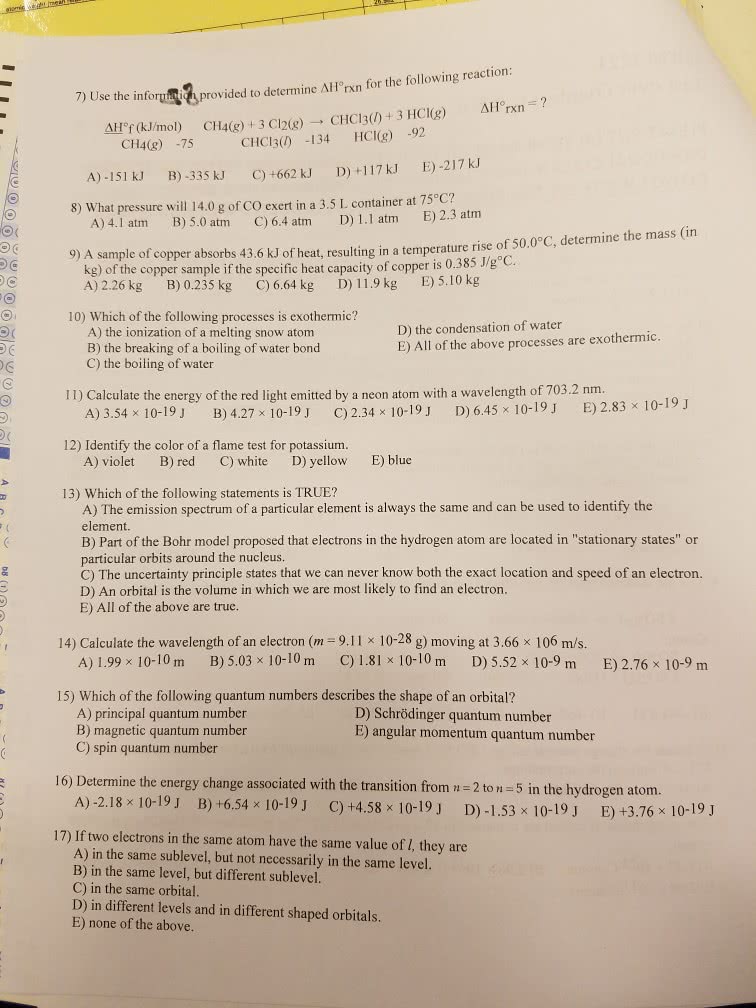CHE 101 Lecture Notes - Lecture 7: Wave Function, Quantum Mechanics, Matter Wave
Document Summary
Electronic structure of atoms: atoms, wave mechanics, orbitals, electron spin, orbital filling, electron configuration, atoms and atomic theory. Using classical physics equations for waves one can solve for the energy of an electron- ) d^2 x wave function (psi) + v x wave function = e (energy) x psi. The bohr theory gave energy, e n, and radius r n. Quantum mechanics gives wave functions psi n, l, Since an electron can"t be precisely located, one must be satisfied with probability which is proportional to (psi)^2. The wave functions are called orbitals and have corresponding energies. Each orbital is described by three quantum numbers, psi n, l, mf, n is the principle quantum number and may take integer values greater than or equal to one (n. Larger values of n mean that the lectron spends more time away from the nucleus. L is the azimuthal quantum number that defines the shape of the orbital.



